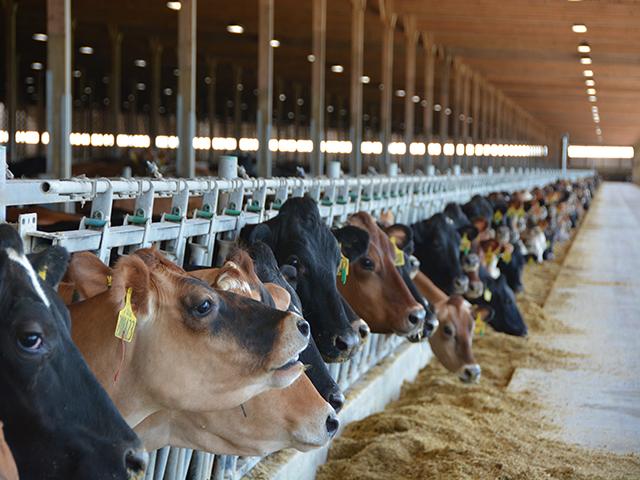$14.3 Million Boosts Pennsylvania Conservation
Pennsylvania Farmers to Receive Millions for Conservation in Chesapeake Bay Region
LINCOLN, Neb. (DTN) -- Farmers in Pennsylvania's largest agriculture-production county are receiving an influx of cash to help expand conservation efforts through the Chesapeake Bay program.
During an event at a dairy farm in Lancaster County on Tuesday, EPA officials and others announced about $14.3 million in grants will be available to farmers in the county.
Using funding from the Infrastructure Investment and Jobs Act, the Most Effective Basins program will receive $23 million this year, a $15 million increase from its $8 million annual allocation.
About 60% of this year's overall funding will go directly to Pennsylvania to connect farmers with the financial resources they need to implement conservation practices.
Lancaster County farmers account for 19% of all ag product sales in the state, generating about $1.5 billion in sales.
The Chesapeake Bay Foundation and other plaintiffs dropped a lawsuit against EPA in recent weeks after a settlement agreement was reached with the EPA to reduce nutrients runoff into the Chesapeake Bay.
The settlement requires EPA to crack down on runoff pollution from farms in seven Pennsylvania counties, including Lancaster.
P[L1] D[0x0] M[300x250] OOP[F] ADUNIT[] T[]
The foundation sued EPA in 2020 for a lack of progress in slowing nutrient runoff, and in particular the lawsuit focused on the agency not holding accountable Pennsylvania and New York for not cutting runoff as part of the total maximum daily load, or TMDL, program for the bay.
EPA also will set its sights on farms in York, Bedford, Cumberland, Centre, Franklin, and Lebanon counties in Pennsylvania. The agency will look at farms currently not required to have federal permits and in proximity to rivers and streams, according to the settlement.
The Most Effective Basins grant program provides funds to states in river basins throughout the Chesapeake Bay watershed with excess nitrogen loads.
The funds are used to install best practices such as forest buffers, manure storage and fencing to reduce agricultural runoff from entering nearby streams.
As part of the legal settlement, EPA will analyze Pennsylvania farms to determine whether certain operations are significant contributors to runoff.
EPA will study whether pollution runoff from stormwater in urban and suburban areas currently not subject to federal regulations is contributing nutrient runoff to rivers and streams.
The evaluation could lead to requiring permits for certain point sources of pollution.
In addition, EPA committed to expand compliance and enforcement efforts. That includes increasing compliance-assurance activities in the counties to assess whether federally permitted sources are complying with existing permit requirements.
EPA also will determine whether there are any general permits or individual permits within the Pennsylvania portion of the Chesapeake Bay watershed that have been administratively extended. EPA will work with Pennsylvania authorities to develop a permit reissuance strategy designed to bring permits up to date and reduce the number of administratively extended permits.
In 2010, EPA issued a TMDL for the Chesapeake Bay and its tributaries with jurisdictions in the District of Columbia, Delaware, Maryland, New York, Pennsylvania, Virginia and West Virginia.
The states adopted caps on discharges of nitrogen, phosphorous and sediment in the bay region.
The Chesapeake Bay Foundation argued in its September 2020 lawsuit EPA's lack of action would lead to the continued degradation of the bay.
In 2014, EPA and the states signed an agreement that requires all practices to be in place to reduce pollution in the bay.
Read more on DTN: "Chesapeake Runoff Case Dismissal Sought," https://www.dtnpf.com/…
Todd Neeley can be reached at todd.neeley@dtn.com
Follow him on Twitter @DTNeeley
(c) Copyright 2023 DTN, LLC. All rights reserved.




